Measurement Teaching Resources
Is your math class ready to dive into length measurement, measuring objects, and more measurement practice? Say hello to printable measurement worksheets, games, and digital activities created by teachers for elementary teachers!
This collection of teaching resources was created by our expert math teachers to help students meet Common Core and state-level standards. Each printable and digital download has undergone a rigorous review by the teachers on the Teach Starter team to ensure they’re student-ready — so you can cut down on lesson planning time!
New to teaching this part of the math curriculum? Our teacher team knows what it’s like to suddenly teach a brand-new grade level, so we’ve put together a quick guide to teaching measurement!
What Are the 4 steps of Teaching and Learning Measurement?
Elementary students have to learn a long list of measurement concepts during their stint in elementary school, including:
- length
- liquid volume
- elapsed time
- mass (weight)
- area
- volume of three-dimensional figures
The good news for teachers: Most measurement concepts have very real-world applications for students. That means there's a whole world of ways to get students excited about reading a ruler or tape measure or weighing heavy objects on a scale.
But before you can get there, let's start with the basic steps to work through when you're teaching students how to measure ... well ... anything!
- Direct comparison — One of the earliest steps of learning measurement is learning the attributes that are being measured. For example, students need to learn what length is if they're ever going to measure it. That's where direct comparison (and step 2, indirect comparison), come in. If you put 2 objects side by side, students can directly compare which is longer and which is shorter and start to understand how to measure an object.
- Indirect comparison — What happens when you can't directly compare two objects? You can add a third as a reference point for indirect comparison, thereby increasing student understanding of the attribute being measured.
- Measuring with non-standard units or informal units — Just as students need to understand the attribute of measuring, they also need to understand the concept of the units we use to measure such as inches or pounds. Using non-standard units is the first step to teaching the concept of units, offering students the chance to work with different objects, counting how many of these "units" it takes to make up another. This is the fundamental base of measurement.
- Measuring with standard units — Finally, in the final step of teaching measurement, students move on to using the formal units of measurement and learn to use measurement instruments.
Why Is Teaching Measurement Important?
There are concrete uses for learning measurement that will surely spring to mind — from using a tape measure to measure a space in a home to weighing ingredients when baking to determining the capacity of a juice glass before pouring in the liquid. These are all means for quantifying our environment.
But the benefits of teaching students about measuring lines with a ruler or figuring out mass measurements from largest to smallest go well beyond the obvious. Learning to measure helps students develop spatial and number skills.
- Plus Plan
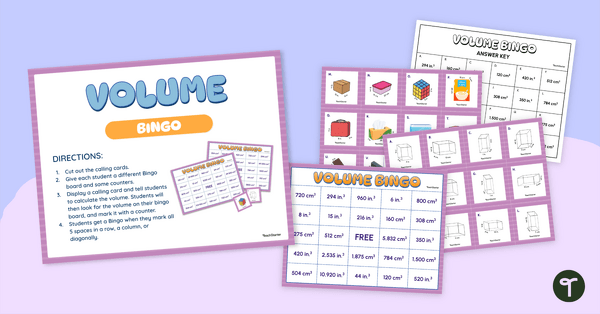
Volume Game — BINGO!
Play our BINGO volume game with your students to give them engaging practice finding the volume of rectangular prisms.
- Plus Plan
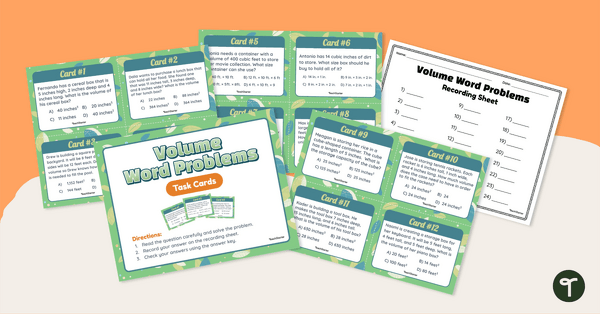
Volume Word Problems – Task Cards
Present these volume word problems task cards to your students to give them practice solving volume problems with real-world context!
- Plus Plan
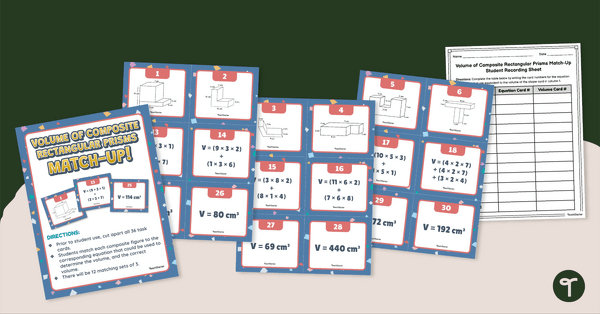
Volume of Composite Figures Activity — Triple Match-Up!
Challenge your students with this volume of composite figures activity that will have them matching compound rectangular prisms with equations and volumes.
- Plus Plan
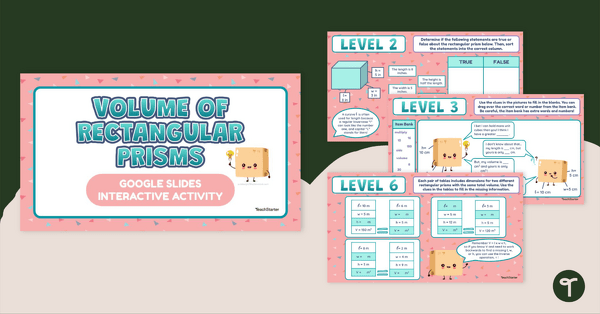
Volume Practice Problems — Interactive Activity
Give students our engaging volume practice problems interactive activity to present them with a variety of volume problems in eight different challenges.
- Plus Plan
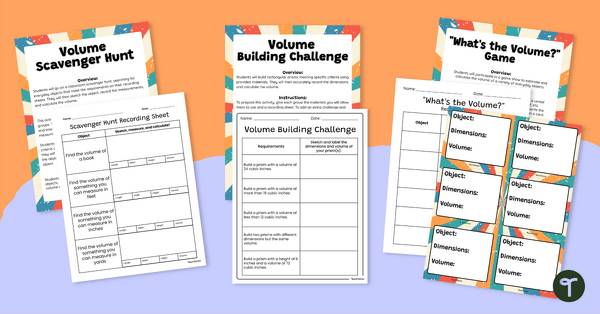
Volume Activities for Sixth Grade and Fifth Grade
Bring math to life with these volume activities for sixth grade and fifth grade students that will have them building prisms, going on a scavenger hunt, and estimating volumes!
- Plus Plan
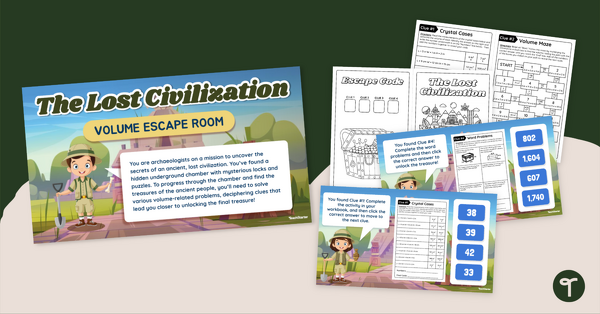
Volume Escape Room
“Escape” ordinary volume activities with this engaging volume escape room that will have students solving volume challenges on a quest for a lost civilization.
- Plus Plan
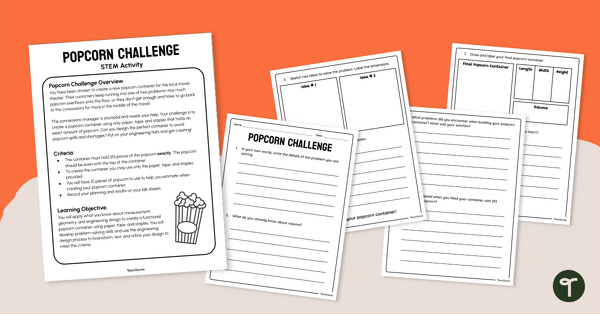
Hands on Volume Activities: Popcorn Challenge!
Make learning “pop” with hands on volume activities like this popcorn challenge!
- Plus Plan
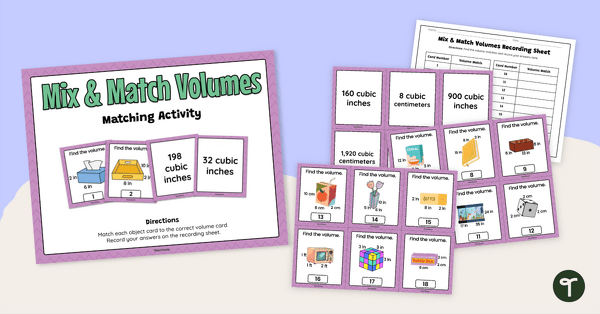
Matching Volume Activity
Provide your students with this matching volume activity to give them practice finding the volume of objects they see in the real world.
- Plus Plan
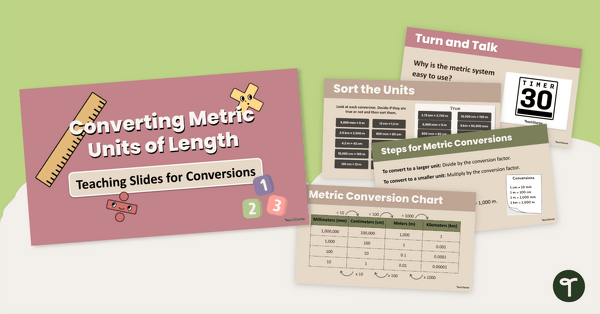
Metric Measurement Conversion Lesson Plan — Teaching Slides
Teach your students metric conversions with our metric measurement conversion lesson plan slides that are easy to download and use!
- Plus Plan
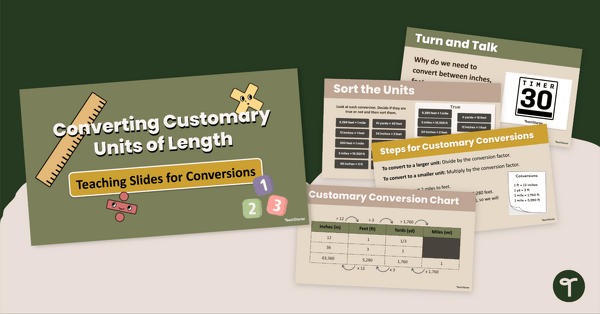
Customary Measurement Conversion Lesson — Teaching Slides
Introduce your students to customary length conversions with our customary measurement conversion lesson slides that are easy to download and use.
- Plus Plan
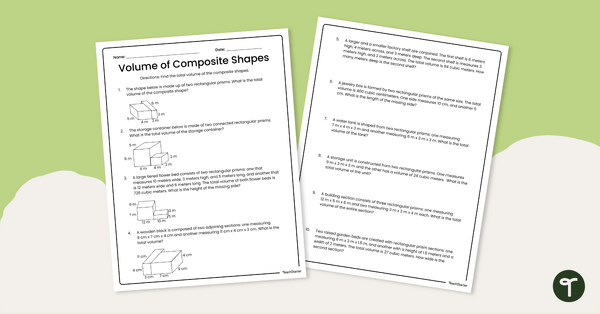
Volume of Composite Shapes Worksheet (Metric System)
Reinforce essential concepts of volume with our volume of composite shapes worksheet full of real-world scenarios using the metric system.
- Plus Plan
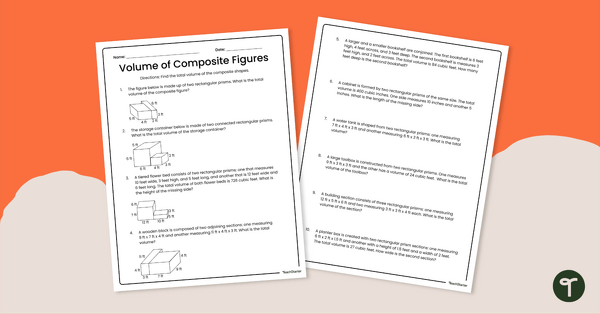
Volume of Composite Figures Worksheet (Customary System)
Practice essential concepts of volume with our volume of composite figures worksheet full of real-world scenarios.
- Plus Plan
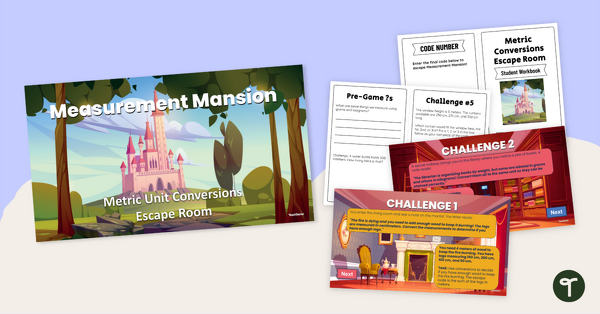
Metric Conversion Games — "Measurement Mansion"
“Escape” the ordinary in your classroom with metric conversion games like our “Measurement Mansion” escape room.
- Plus Plan
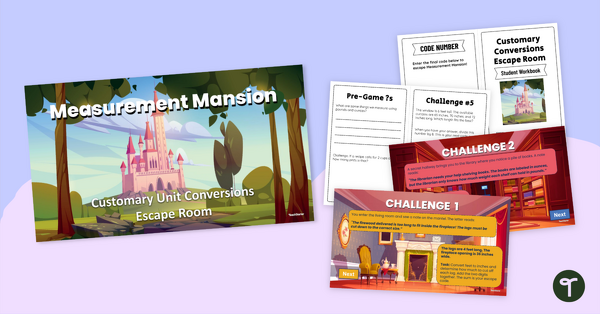
Measurement Escape Room (Customary System)
“Escape” the ordinary in your classroom with this measurement escape room that will engage your students while they practice customary conversions of length, weight, and capacity.
- Plus Plan

Measurement Conversion Games — Customary System Task Card Set
Download our measurement conversion games task card set to give your students many ways to practice converting between customary units of length, weight, and capacity.
- Plus Plan

Metric Conversion Word Problems Worksheet Set
Assign our metric conversion word problems worksheet set to strengthen your students’ understanding of metric conversions.
- Plus Plan
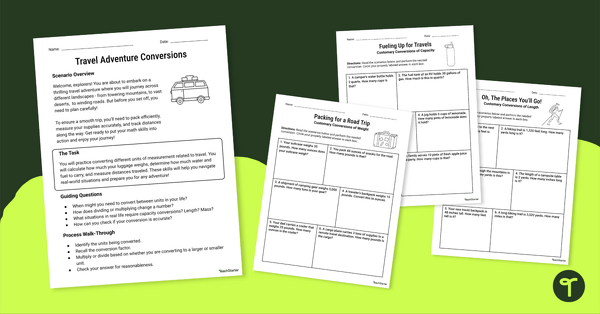
Customary Measurement Conversion Word Problems Worksheet Set
Use our customary measurement conversion word problems worksheet set to strengthen your students’ understanding of customary conversions.
- Plus Plan
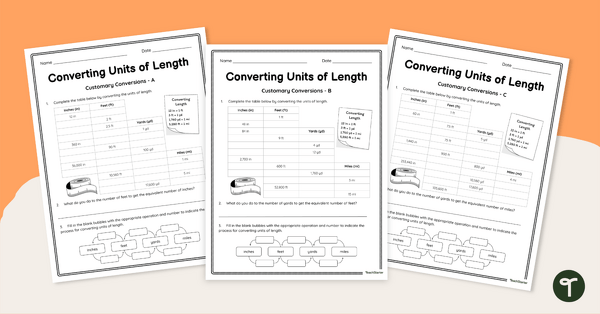
Converting Customary Units of Length Worksheet Set
Review measurement concepts with our customary length conversion worksheet set that provides practice converting among four units of length.
- Plus Plan
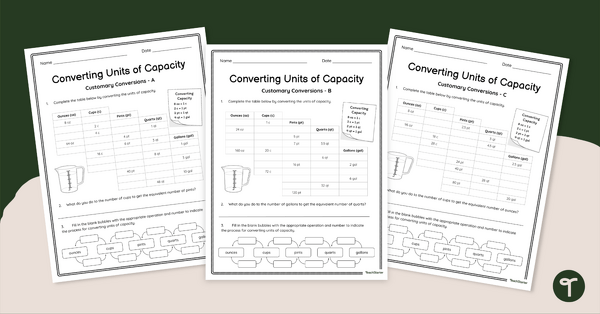
Customary Units of Capacity Worksheets
Use these customary units of capacity worksheets to give your students the practice they need converting among cups, pints, quarts, and gallons.
- Plus Plan
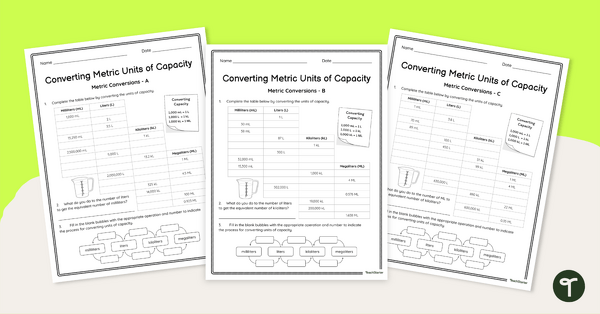
Conversion of Capacity Worksheet Set
Use this conversion of capacity worksheet set to give your students essential practice converting metric units of capacity.
- Plus Plan

Converting Customary Units of Weight Worksheets
Share these converting customary units of weight worksheets with your students to give them the practice they need to master conversions of customary weight.
- Plus Plan

Converting Mass Units Worksheet Set
Download this converting mass units worksheet set to give your students the practice they need to master conversions of metric mass.
- Plus Plan
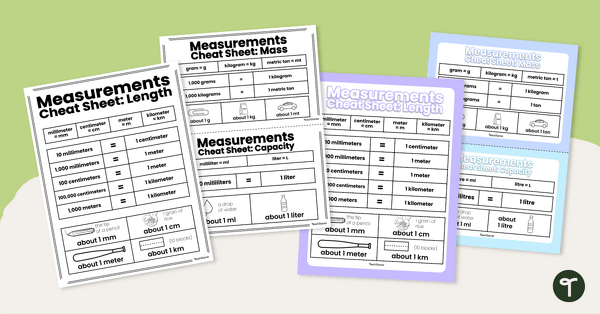
Metric Conversion Handout Set
Use this metric conversion handout set as a personal student guide or classroom poster for easy reference!
- Plus Plan
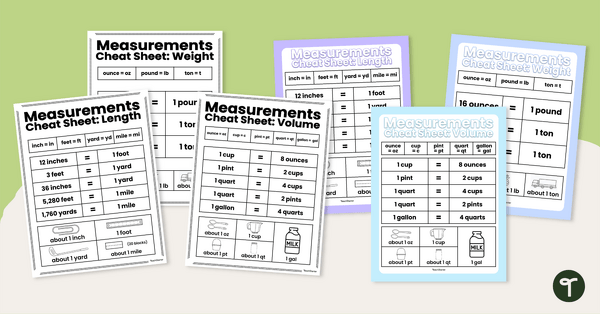
Customary Measurement Conversion Chart Set
Use this customary measurement conversion chart pack as a handout or classroom poster for easy reference!
- Plus Plan
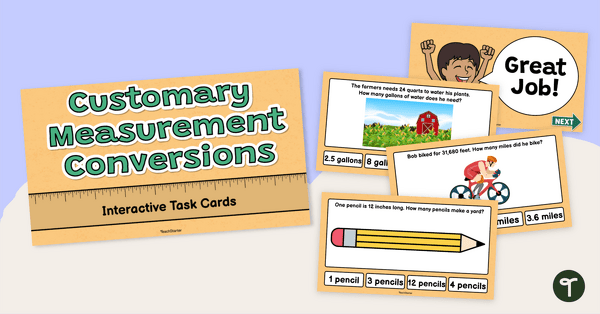
Interactive Customary Conversion Activities — Interactive Task Cards
Gamify learning with interactive customary conversion activities like these engaging digital task cards!
- Plus Plan

Customary Measurement Conversion Game — “Construction Conversions”
“Build” understanding with this customary measurement conversion game that will help students practice converting among customary units of length.
- Plus Plan

Metric Conversion Activities — “Construction Conversions” Board Game
Introduce metric conversion activities like our “Construction Conversions” board game to help your students master conversions of metric length.
- Plus Plan

Measuring Capacity Escape Room
Explore measuring and comparing capacity in liters and milliliters with this measuring capacity escape room.
- Plus Plan

Volume and Capacity Definition Poster
Display this volume and capacity definition poster in the classroom to help students identify the main difference between capacity and volume.
- Plus Plan
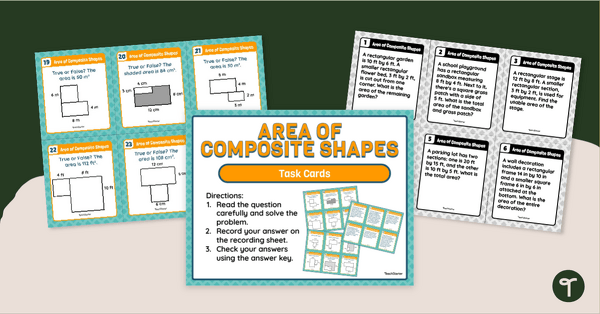
Finding the Area of Composite Shapes Task Cards
Calculate the area of rectilinear shapes with a set of Finding the Area of Composite Shapes Task Cards for 5th Grade and 6th Grade.
- Plus Plan
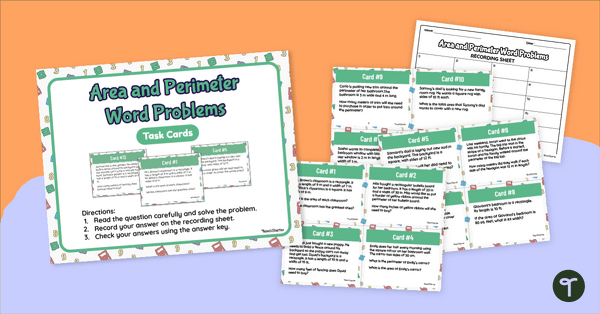
Area And Perimeter Word Problem Task Cards
Use these area and perimeter task cards in your math centers to give your students practice solving real-world word problems.
- Free Plan
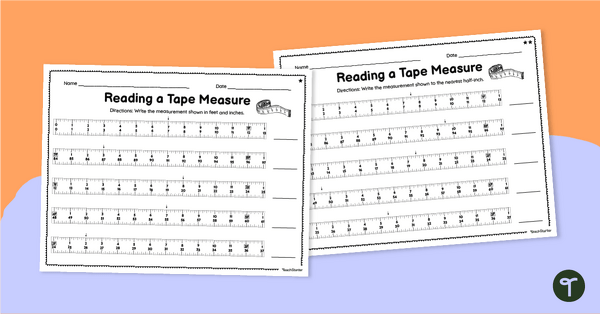
Reading a Tape Measure Worksheets
Practice reading a tape measure to the nearest inch and half inch with a set of printable Reading a Tape Measure Worksheets.
- Measurement Worksheets
- Measurement Games
- Measurement Posters
- Measurement Projects
- Measurement Templates
- Measurement for Pre-K
- Measurement for Kindergarten
- Measurement for 1st Grade
- Measurement for 2nd Grade
- Measurement for 3rd Grade
- Measurement for 4th Grade
- Measurement for 5th Grade
- Measurement for 6th Grade